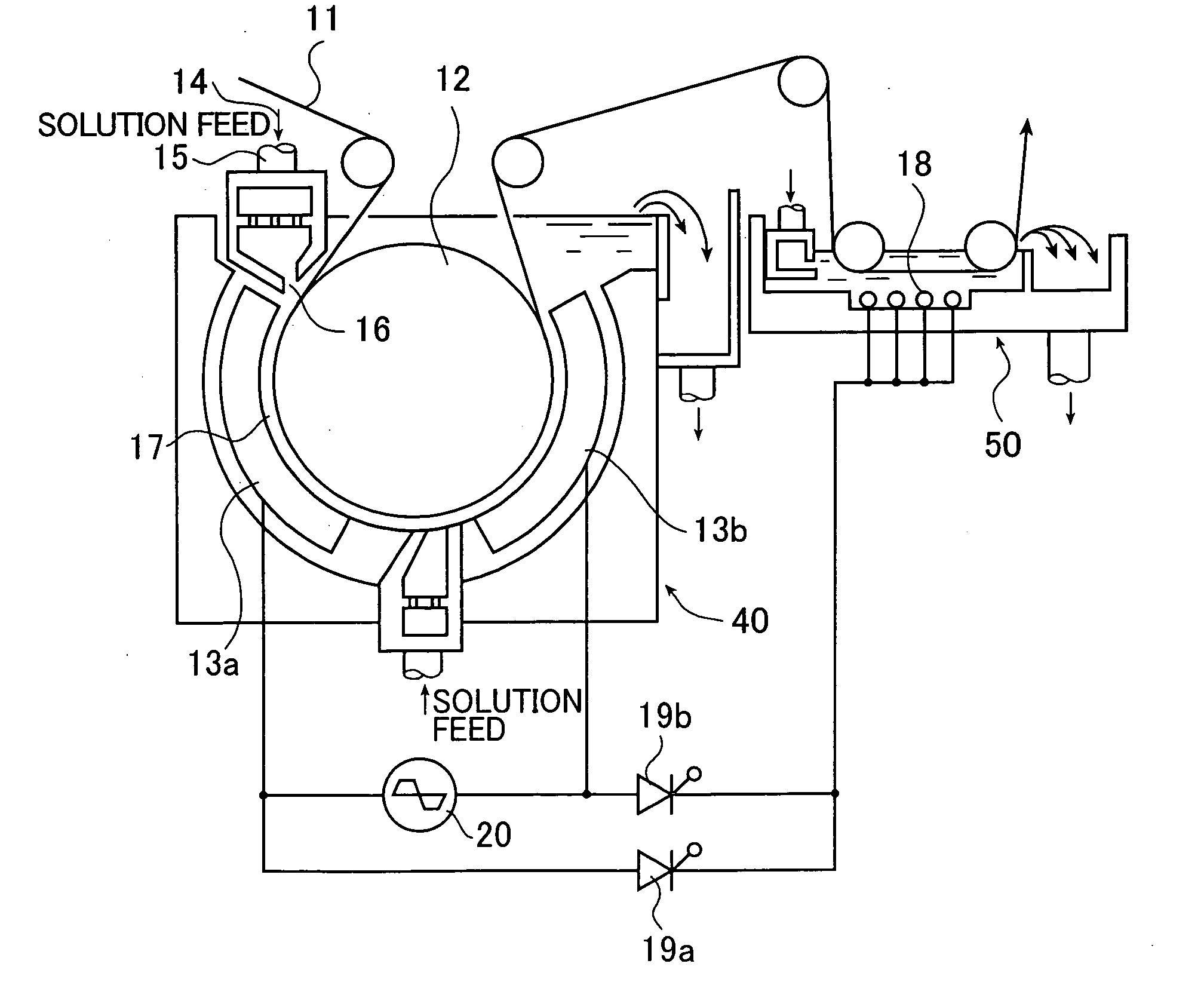Method of manufacturing a support for a lithographic printing plate
a technology of lithographic printing plate and support, which is applied in the field of manufacturing a support for a lithographic printing plate, can solve the problems of shortening the press life lowering the adhesion, and lowering the strength of the printing plate, and achieves excellent cleaning resistance, excellent scumming resistance, and long press life.
- Summary
- Abstract
- Description
- Claims
- Application Information
AI Technical Summary
Benefits of technology
Problems solved by technology
Method used
Image
Examples
examples
[0353] Hereinafter, the present invention is described in detail by way of examples. However, the present invention is not limited thereto.
Examples of the First Aspect of the Invention
1-1. Manufacture of Lithographic Printing Plate Supports
examples 1-1 to 1-41 and 2-1 to 2-43
[0354] In each of Examples 1-1 to 1-41 and 2-1 to 2-43, a melt was prepared from an aluminum alloy of the composition shown in Table 1 below (with the balance being aluminum and inadvertent impurities; units are in wt %). The melt was subjected to molten metal treatment and filtration, then was cast into a 500 mm thick, 1,200 mm wide ingot by a direct chill casting process. The ingot was scalped with a scalping machine, removing an average of 10 mm of material from the surface, then was soaked and held at 550° C. for about 5 hours. When the temperature had fallen to 400° C., the ingot was rolled on a hot rolling mill to a thickness of 2.7 mm. In addition, heat treatment was carried out at 500° C. in a continuous annealing furnace, following which cold rolling was carried out to a final thickness of 0.3 mm and a width of 1,060 mm, thereby giving an aluminum plate.
TABLE 1AluminumplateSiFeCuMnMgCrZnTi1-10.0800.3000.0000.0010.0000.0010.0030.0211-20.0800.3000.0010.0010.0000.0010.0030.0...
examples 1-42 to 1-44 and 2-44 to 2-47
[0393] In Examples 1-42 to 1-44 and 2-44 to 2-47, aside from carrying out treatment (1) described below instead of the above treatment (k), supports for lithographic printing plates were obtained by carrying out the surface treatment in the same way as in Examples 1-1 to 1-41 and 2-1 to 2-43.
(1) Hydrophilizing Treatment 2
[0394] The aluminum plate was immersed for 8 seconds in an aqueous solution containing 4.0 wt % of No. 1 sodium silicate (solution temperature, 22° C.). The aluminum plate surface had a silicon content, as measured with a fluorescent x-ray analyzer, of 5.3 mg / m2.
[0395] The solution was then removed from the plate with nip rollers. In addition, rinsing treatment was carried out using a spray line of the same construction as that used in the rinsing treatment in step (b) above, after which water remaining on the plate was removed with nip rollers. This was followed by drying in which 90° C. air was blown across the plate for 10 seconds, thereby giving a support fo...
PUM
| Property | Measurement | Unit |
|---|---|---|
| surface roughness | aaaaa | aaaaa |
| surface roughness | aaaaa | aaaaa |
| concentration | aaaaa | aaaaa |
Abstract
Description
Claims
Application Information
 Login to View More
Login to View More - R&D
- Intellectual Property
- Life Sciences
- Materials
- Tech Scout
- Unparalleled Data Quality
- Higher Quality Content
- 60% Fewer Hallucinations
Browse by: Latest US Patents, China's latest patents, Technical Efficacy Thesaurus, Application Domain, Technology Topic, Popular Technical Reports.
© 2025 PatSnap. All rights reserved.Legal|Privacy policy|Modern Slavery Act Transparency Statement|Sitemap|About US| Contact US: help@patsnap.com



